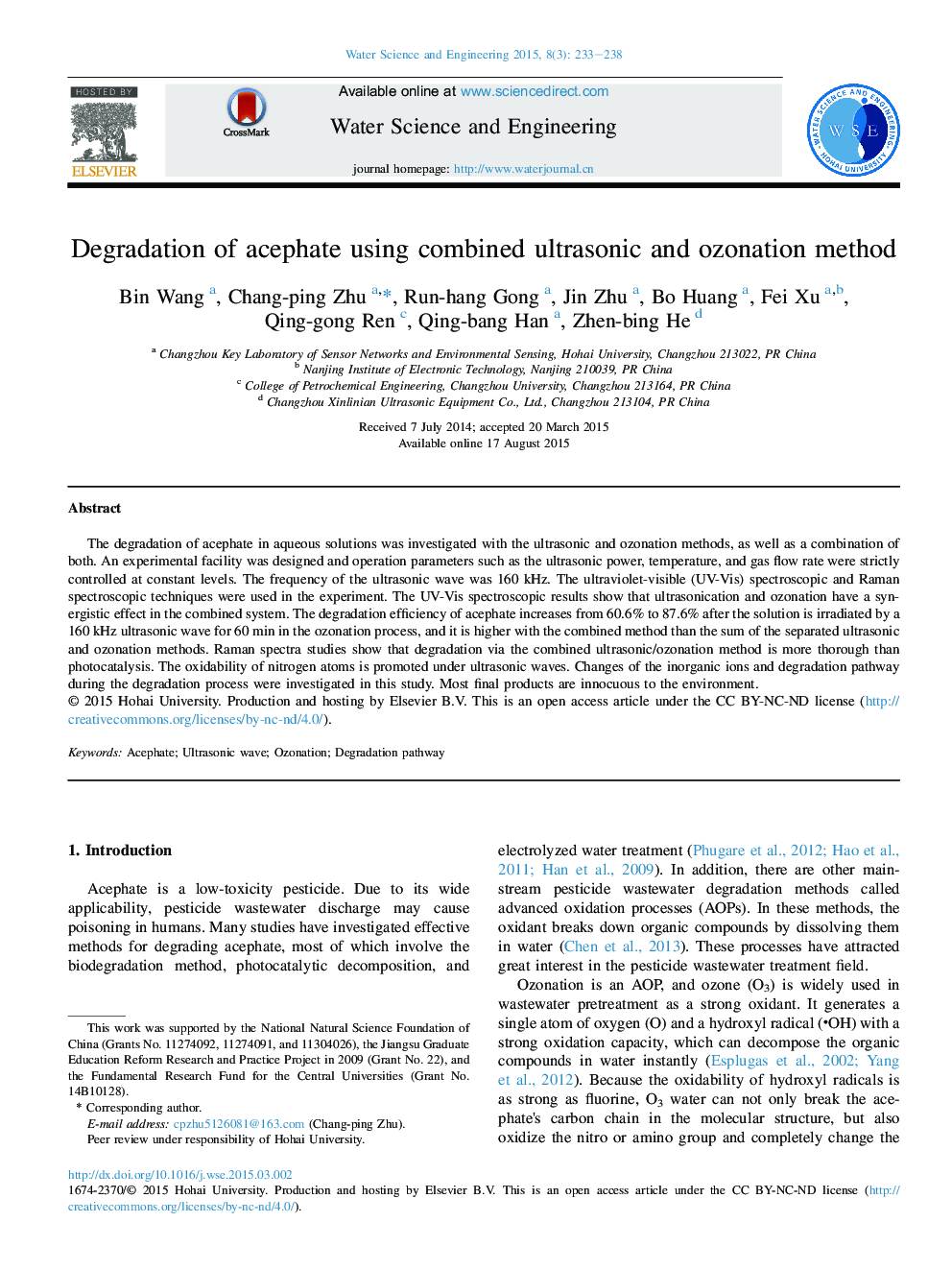| Article ID | Journal | Published Year | Pages | File Type |
|---|---|---|---|---|
| 313384 | Water Science and Engineering | 2015 | 6 Pages |
The degradation of acephate in aqueous solutions was investigated with the ultrasonic and ozonation methods, as well as a combination of both. An experimental facility was designed and operation parameters such as the ultrasonic power, temperature, and gas flow rate were strictly controlled at constant levels. The frequency of the ultrasonic wave was 160 kHz. The ultraviolet-visible (UV-Vis) spectroscopic and Raman spectroscopic techniques were used in the experiment. The UV-Vis spectroscopic results show that ultrasonication and ozonation have a synergistic effect in the combined system. The degradation efficiency of acephate increases from 60.6% to 87.6% after the solution is irradiated by a 160 kHz ultrasonic wave for 60 min in the ozonation process, and it is higher with the combined method than the sum of the separated ultrasonic and ozonation methods. Raman spectra studies show that degradation via the combined ultrasonic/ozonation method is more thorough than photocatalysis. The oxidability of nitrogen atoms is promoted under ultrasonic waves. Changes of the inorganic ions and degradation pathway during the degradation process were investigated in this study. Most final products are innocuous to the environment.
